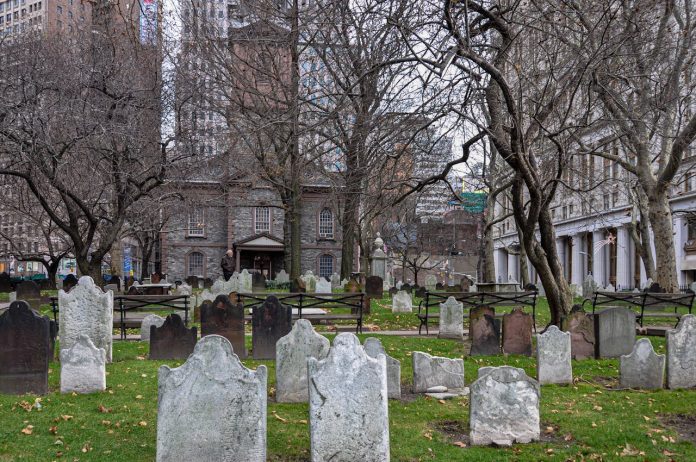“Don’t worry about it, New York City makes a lot of people cry,” so says my student, Laura. But still I wonder — why have my recent visits to New York City brought me to such disintegration? The adult self, the in-control self: becomes elusive; the underbelly self, the unkempt self: roams the streets, unbefriended.
As backdrop, I’ve been pondering my family’s relationship to New York City for quite a while. Years back I learned that Columbia University had acquired records relating to our family history in the city. As a child my grandfather Fred had been an “inmate” at the city’s so-called “Home for the Friendless” with its mission to “protect, befriend, and train to virtue and usefulness those to whom no one seemed to have thought or pity.”
In my father’s family, there are things we know and things we don’t know. What we know: My grandfather lived at that friendless home and later traveled west on the “orphan train.” But he was not an orphan. As an adult, he returned to New York City, and then left again for the Midwest. What we don’t know: What happened to his mother, Carrie?
Thus, I took that trip to New York City several years ago. There, I paged through Victoria-era ledgers in white gloves provided by the research library, taking photos of pages with shaky hands. The ledgers confirmed facts, and in small notes, revealed more.
It was what I count as my fifth visit to New York City where the troubles between the selves began. I was traveling with my husband and daughter to tour a college. I was determined to also see Carrie’s grave — which I had located in the interim period. For reasons too tender to share — I knew it to be a pilgrimage. I had a yearning to pay respect as I intuited this might have been in short supply in her lifetime. I didn’t quite know what I would do when we got to her grave, but I had some idea of my first question: “Did you ever see your son again?”
But the city does not always give generously to those who yearn. After a subway ride much longer than anticipated, we arrived at the cemetery. We were soon tailed by a groundskeeper in a pickup truck yelling in angry bursts. “WE CLOSE IN 15 MINUTES!” Not knowing this cemetery kept hours, we began to trot to the far corner where the grave was located. “YOU MUST LEAVE IN 5 MINUTES!” We began to run frantically up and down the rows, scanning for the stone. “YOU MUST LEAVE NOW!” We were herded out the back entrance, blocked from returning to the street by rail tracks, her grave never located. Despite my husband’s kindness, I rebuffed his consolation as I paced and cried, even as I was confused by why I felt so skinned and de-boned.
The next day, on the college tour, it was clear to me that this school in this city was not right for my daughter. Too much design and not enough art. Too much commerce and not enough community. The school was an easy cross off. I am however curious about the force of history in shaping our opinions. This school sits one mile from that friendless home, how could it protect and befriend my daughter?
In my father’s family, there are things we know and things we don’t know. What we know: the family did well in New York City until a series of catastrophic deaths. First, the patriarch’s wife died. Then his first son died — leaving a wife and children. Not long after, a second son died — leaving another wife, who was Carrie, and four children (one, my grandfather Fred, then a baby). The story, handed down, is that there was no room for them, the patriarch’s apartment filled with the first son’s grieving family.
What we don’t know: What happened in the years between Carrie’s husband’s death and the time the children arrived at the “Home for the Friendless”? One small note, in those Victorian ledgers, “prostitution,” details unknown. Was help not offered or not available? Or, like me, she was inclined to rebuff help at the moments of greatest need. I imagine a woman without a friend, walking alone in the city, hungry. I want to ask her: “Did anyone show you thought or pity?”
Later, on my sixth visit to New York City, we attended the school’s “accepted student’s day.” I was determined to put on a brave face, swallowing any gap between what I wanted to be for my daughter and my underbelly-self, eyeing the city with distain. As we walked the street, I told myself: see the brownstone, not the trash; see the tree, not the concrete; see the warmth, not the cold. I tethered my selves onto a favorite saying of mine: “being a parent is one long process of letting go.” Focus then, on letting go.
On my seventh visit to New York City, my daughter and I said goodbye on a noisy street corner after moving her into a high-rise dorm. I waited until we were driving away to cry.
I remembered another small note in those Victorian ledgers: “mother visits often.” And another: “to be sent west” at age nine. I have read that children were encouraged to write their mothers. I want to ask her: Did he?
***
When my daughter was born, I was afraid of what the sleepless nights would do to me. My older sister, a mother of four, told me something important. “There is a certain time — between 3 a.m. and 4 a.m. — when it feels like you two are the only two awake in the world.” She hinted it was a time for beholding.
My daughter’s entire childhood has passed, but I remember those 3 a.m. connections vividly.
Just me and a tiny child awake in the entire world — she, making the only noise in that deep quiet — those breathing/sucking sounds babies make at the breast. It all seemed impossible — looking down at this vulnerable creature who, until recently, and astoundingly, lived inside of me. My entire pregnancy I wondered — can this really be how it happens — flesh inside of flesh?
She came after heartache — a failed marriage; cancer; a new marriage with rounds of fertility treatment and inevitable loss; my oncologist’s worry about pausing the scans for a chance at a child whom she expected I would not live to see graduate from high school. All babies are precious. So was she to me. I want to ask her: “Do you too remember those late-night communions? Do you understand the tears were for those times when you realize that good can follow bad?”
***
After he was grown my grandfather Fred returned to New York City, having finished his indenture to a farmer in Illinois and the farmer having fulfilled his contract to “give said apprentice a new bible, two complete suits of new wearing apparel, suitable to his condition in life, and a payment of one hundred and fifty dollars.” In New York City, he met his future wife, she also experienced with family catastrophe and the loss of a mother. After having two sons, they returned to rural Illinois, believing that tenant farming was better for children than tenement living.
In my father’s family, there are things we know and things we don’t know. What we know: Fred became a good and gentle father, raising my dad, also to be a good and gentle father. What we don’t know: Did Fred ever see his mother again — for he never spoke to my father about her — and if not, who let go of whom?
My last trip to New York City was a mother-daughter trip, exquisitely planned to keep the wobbling selves in alignment. I saved cost by staying at a Quaker residence — coincidentally called a “Friends House.” It seems minor now, but I was caught off guard when, after an afternoon together, my daughter said she preferred to eat alone. “Being a parent is one long process of letting go.” I should add, “and of being let go of.”
I am happy my daughter is launching her adult life as she chooses. Yet, at times, the separation catches me off guard, a flesh wound. I hold two truths close. The first — we are all deeply connected. The second — we must learn to walk alone.
Agreeing to eat apart, we separated. Imagine a woman without a friend, walking alone in the city, hungry. I searched First Avenue for food and also some wine. I took them back to the Friends House where I ate, alone.
On a future visit to New York City, I will try again to find Carrie’s grave. I will lay a wreath. I will ask her: “How did you bear it?” I will tell her: “I am sorry.” I will say: “I am here” and also, “We live on.”
Image by Jose Francisco Fernandez Saura on pexels.com, licensed under CC 2.0.
- Letting Go: The History of New York City - January 17, 2025



A beautiful testimony to life, generations, tenuous connections, questions unanswered, meaning and relationships, identity and journey. What a beautiful human being you are – and an artist and pioneer to craft these accounts and share them with the world. I am made stronger in reading your journey and your search and your facing hard facts – I learn about another’s attempt to shed light and bring witness to family and generations and the human struggle. I cherish this story.